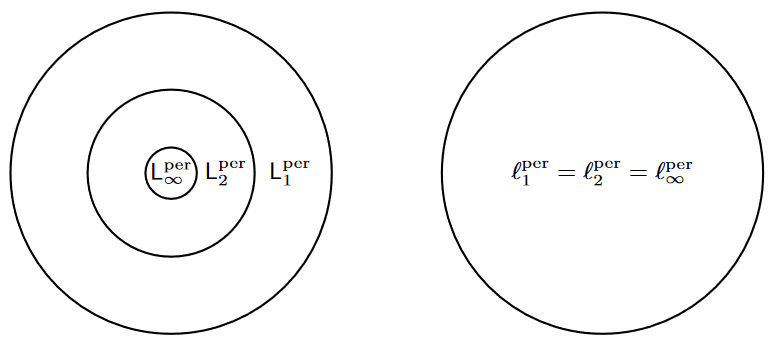In mathematics, Lebesgue spaces are vector spaces of functions, which find broad applications in signal theory. Common spaces for finite continuous-time signals include , , and (and their discrete-time counterparts).
- If the action of a signal is finite, then we say (CT) and (DT), i.e., it belongs to the space of Lebesgue integrable functions (CT) or the space of absolutely convergent sequences.
- If the energy of a signal is finite, then we say (CT) and (DT), i.e., it belongs to the space of {square-integrable functions, summable sequences}.
- If the amplitude of a signal is finite, then we say (CT) and (DT).
The signal spaces generally are defined as follows:
Relationships
The relationships between these common spaces are below, for CT and DT signals respectively.1
 The idea is that if , then it will also be . This is provable (we try to find a bound on the energy):
The idea is that if , then it will also be . This is provable (we try to find a bound on the energy):
With more computations of this type with varying signals we can discern the other relations.
For the discrete-time case, it’s much simpler to establish. We can say that if has finite energy, i.e.,:
Then all the elements in the sum must too be finite. So .
If the signal is periodic, the relationships simplify considerably.
 Signals of different types are useful for different purposes:
Signals of different types are useful for different purposes:
- and are useful for the continuous-time Fourier series.
- and are useful for the continuous-time Fourier transform.
- and are useful for characterising bounded-input bounded-output (BIBO) stability of linear time-invariant (LTI) systems.
- and are useful for describing signals in communications and control systems.
Footnotes
-
From Prof Simpson-Porco’s lecture slides. ↩